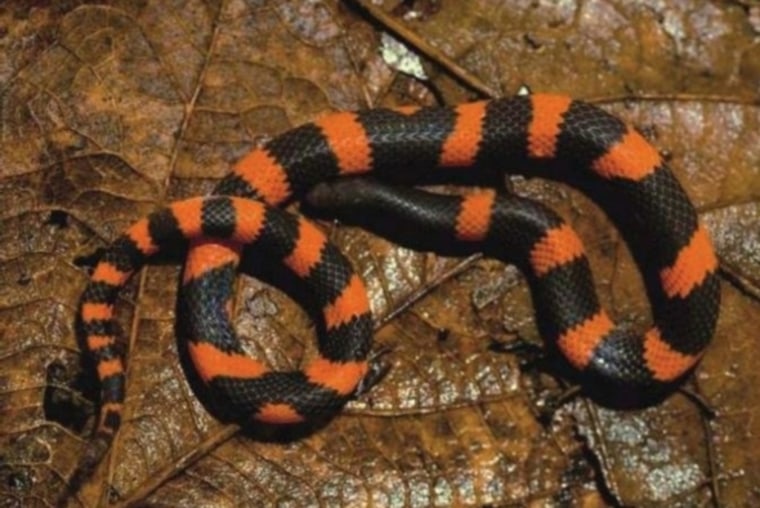It may not look like gold, but scientists are calling a newly discovered snake in central Mexico a lost Aztec treasure.
The Geophis loranca is a burrowing snake that lives high up in the mountains of the Sierra de Quimixtlán in central-east Puebla and the Sierra Zongolica in west-central Veracruz.
"Our analyses suggest that this group is more diverse than previously thought. They have proven to be an exciting model to understand the patterns of biological richness in the Mexican mountains," conclude the authors in a study that was reported in ZooKeys.
Herpetologists with the Museo de Zoología and the Instituto Tecnológico Superior de Zongolica are currently researching these snakes. So far researches have found the snake species lived at high altitudes between 1,200 to 1,700 meters and buried under leaves or under fallen trees.

Full-grown adults grow up to about 33 centimeters, according to the researchers. The snake is identified by its orange and black bands, round eye and also its burrowing behaviors.
"Most of these snakes have notably small geographic ranges and sometimes are only found in one type of vegetation. This makes them particularly vulnerable to the destruction of their habitat. It is important to know them before it gets too late," note the scientists in a release.
These snakes have not been studied in great depth because they live in such isolated habitats, and don't really encounter people or foreign animals. This not only means that they live in highly specific environments, it makes the species particularly vulnerable to extinction if its habitat changes or is compromised.
